As we were in and out of Mexico so many times, and into many of the ports numerous times I decided to do a combined post rather than do a bunch of individual posts. We went to places like Cozumel and Costa Maya almost 10 times each, so as you can imagine it would have been quite repetitive had we done it any other way. What we did do was to try and see different things each time to make the post a little more complete than a simple pop in.
Many cruise lines have Mexico as a major destination. Our preferred line (RC) makes numerous stops in Mexico (on both the Pacific coast and on the Gulf of Mexico side). The Pacific coast side we have not yet visited but by name only, they are the ports that the old TV show ‘The Love Boat‘ used to visit and they include: Mazatlán, Puerto Vallarta, Ensenada and Cabo San Lucas. The TV show also used to go to Acapulco, but drug wars has made Acapulco one of the most dangerous cities in Mexico and is therefore no longer on the list of cruise destinations.
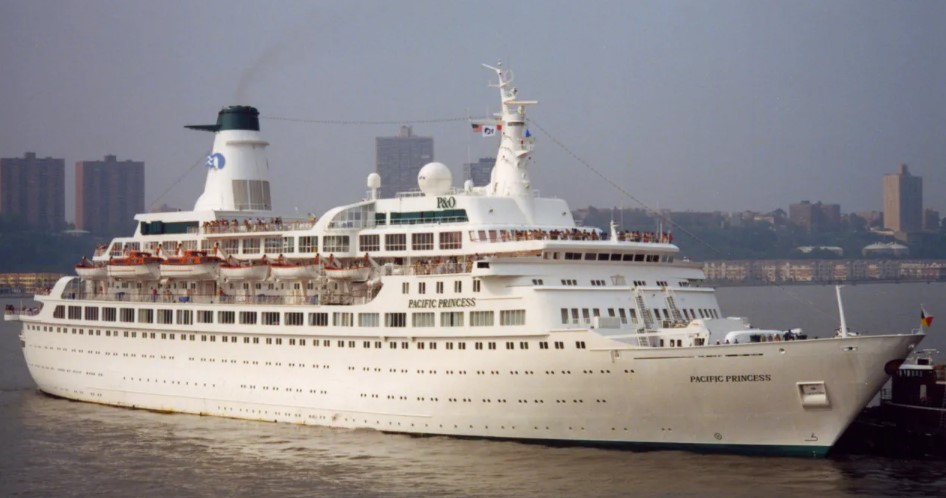
For those who watched the show, the ‘star’ of the show (the ship) remained in operation until it was eventually scrapped in 2013.
So while we have not (yet) visited any of the Pacific Ports (we do plan to) we have given a fair old hit to the ones within the Gulf of Mexico and on the Yucatan peninsula.
The first thing that must be mentioned is that the Gulf of Mexico side is prone to large seas and often high winds. This greatly affects the water quality, water safety and sometimes even the ability for the ship to even land you at the intended port. Several times, ports had been cancelled due to rough seas or high winds.
The Yucatán Peninsula is dotted with numerous relics of the Mayan civilisation that continue to amaze people even centuries after the Mayan demise. Our first foray into this part of the world saw us boycotting the beaches and making a beeline to Chichen Itza. One of the 7 wonders of the world why would you not. So Chichen Itza (or chicken kisser as we have been referring to it) is a former Mayan city dating back to as early as 250AD. At its peak around 35,000 people would have called it home. It was one of the most important Mayan cities in Latin America.
Chi means “mouths” and chen means “wells” and Itzá is the name of the Maya tribe that settled there. Chichen Itza means “At the mouth of the well of the Itza.”
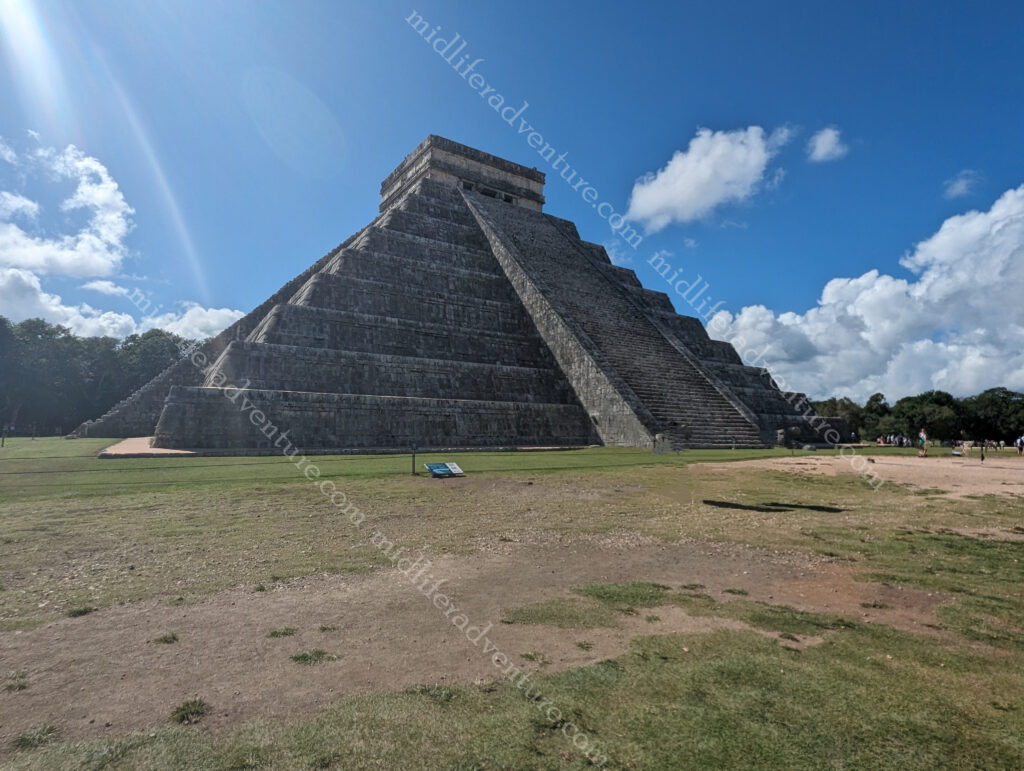
Possibly the most notable thing about the city is the ancient temple Pyramid of El Castillo (Kukulcan Temple). It is the most famous and recognisable of Mexico’s monuments but it was not built by the Mayans but rather in the 10th century by foreign invaders.
The Pyramid of El Castillo rises 24 metres above the Main Plaza area. Each of its four sides has 91 stairs that face north, east, south, and west. Including the step on the top platform, there is a total of 365 steps. This is the same number of days in the solar year.
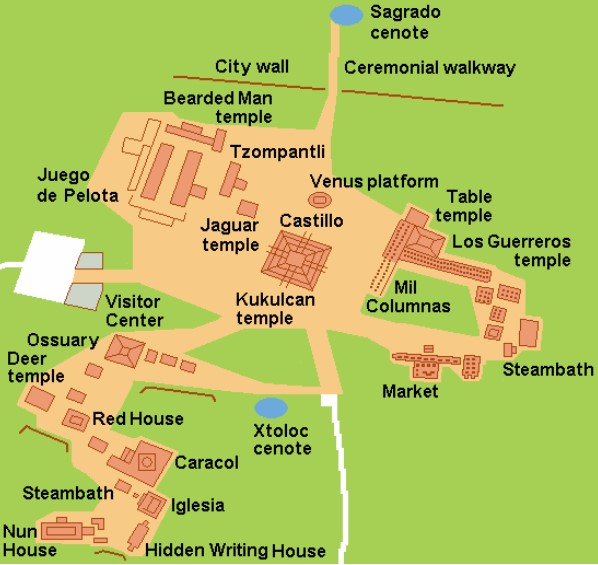
Beyond the pyramid at the centre, the site contains the remains of the entire city. The site of Chichen Itza occupies an area of around 10 sq/km. And everywhere you go there is more to see. Carved walls pyramids, buildings, sports courts, virtually everything you would expect to find in a major (ancient) city.



















The earliest structures built include the Akabtzib (“House of the Dark Writing”), the Chichanchob (“Red House”), the Iglesia (“Church”), the Casa de las Monjas (“Nunnery”), and the observatory El Caracol (“The Snail”).
On the site are caves and sinkholes in limestone formations, known as cenotes. These are natural wells that form when limestone surfaces collapse and expose water underneath.
Tlachtli was a Mayan game that involved keeping a grapefruit-sized rubber ball in the air with the use of thighs, hips, and chest.
It was known by various other names including pok-a-tok, pitz, tlacho, and ulama. In some variations, the goal became knocking the ball through hoop-like stone rings.
And the losers were often sacrificed to the gods.
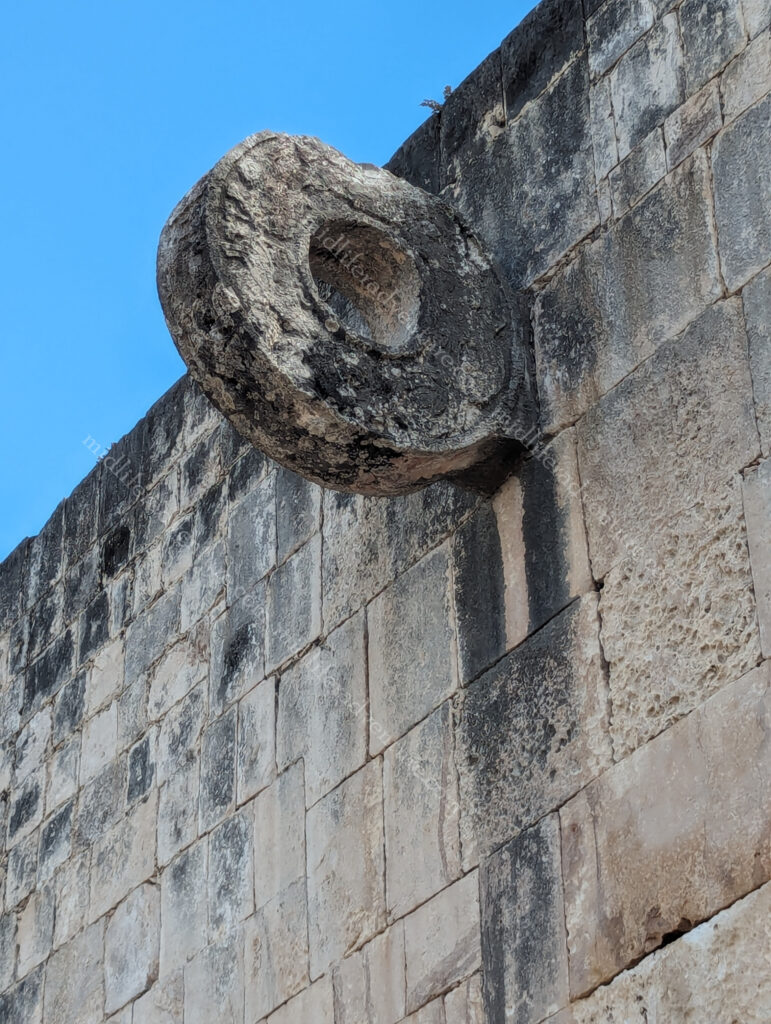
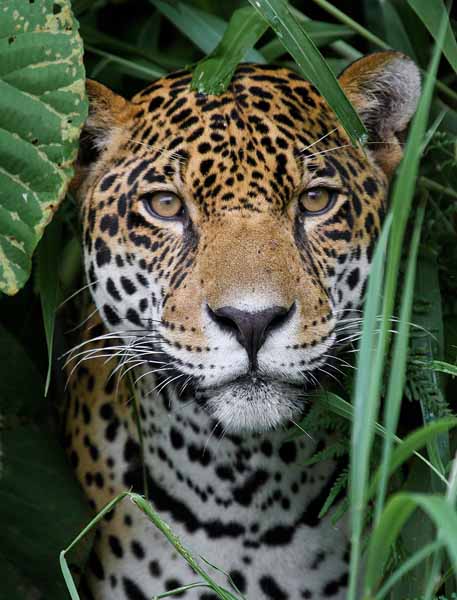
The most revered beast in the Mayan world was the jaguar.
It was thought that at night the sun slipped into the underworld and would transform into a jaguar.
The animal was linked with warriors and hunters, and became a symbol of the might and authority of the rulers.
The kings and rulers desired the power and spirit of the jaguar.
During the spring and autumn equinoxes (around March 20/21 and September 20/21), the light hits the earth on the equator. When this happens, the shadows cast by the setting sun give the appearance of Quetzalcóatl (a feathered serpent) slithering down the steps.
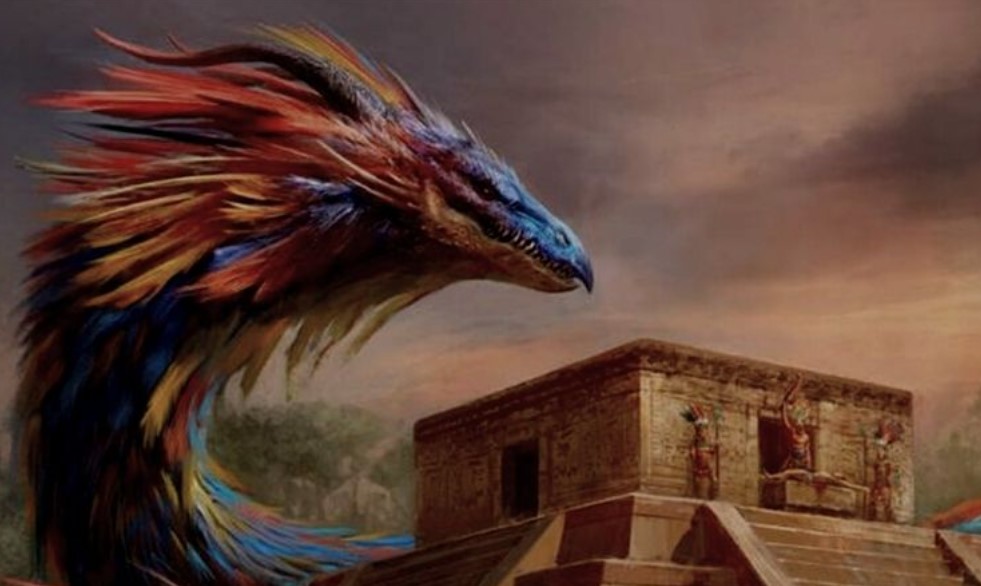
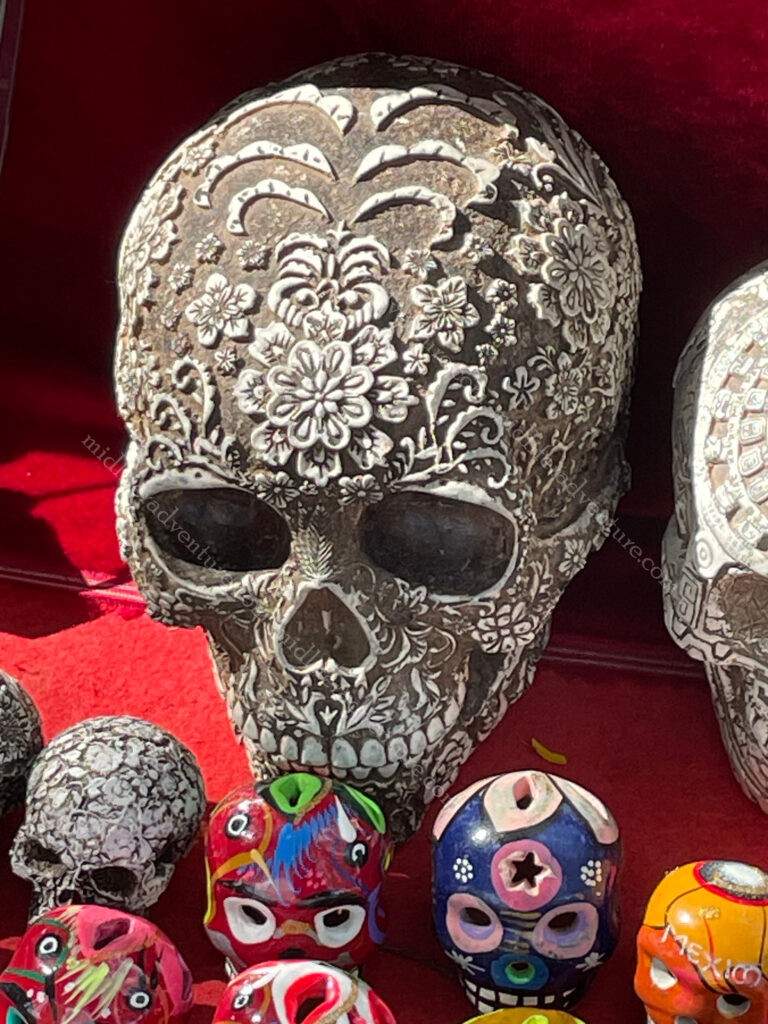
The Day of the Dead (Dia de los Muertos) is a Mayan Tradition going back to 1800BC that celebrates life with food, dances, and skull masks.
It is believed that the souls of the spirit realm can visit the land of the living, not to haunt people, but to lovingly reconnect with their family and friends.
Chichen Itza was good and we were both glad that we made it here. But it was impossible not to compare this experience with other major places that we have seen around the world, most notably Siem Reap in the Khmer Empire. The two experiences were remarkably similar but the concept of comparison sits poorly with me.





Having looked around the site we had some time to look at some of the trinkets that were available for purchase. I must admit that I actually enjoyed them and would have liked to have gotten some. There was an amazing carved Mayan Calendar that I loved but the weight and bulk just did not lend itself to ongoing travel.







Cozumel
More accurately, Isla Cozumel is Mexico’s 3rd largest island and has countless activities on offer, both below and above the waves. The island is about 30 miles long and 9 miles wide. The name in Mayan translates to “Island of the Swallows” due to the birdlife. The place has been a long-time dive Mecca and has white sand beaches, coral reefs, modern amenities and lots of wild areas.
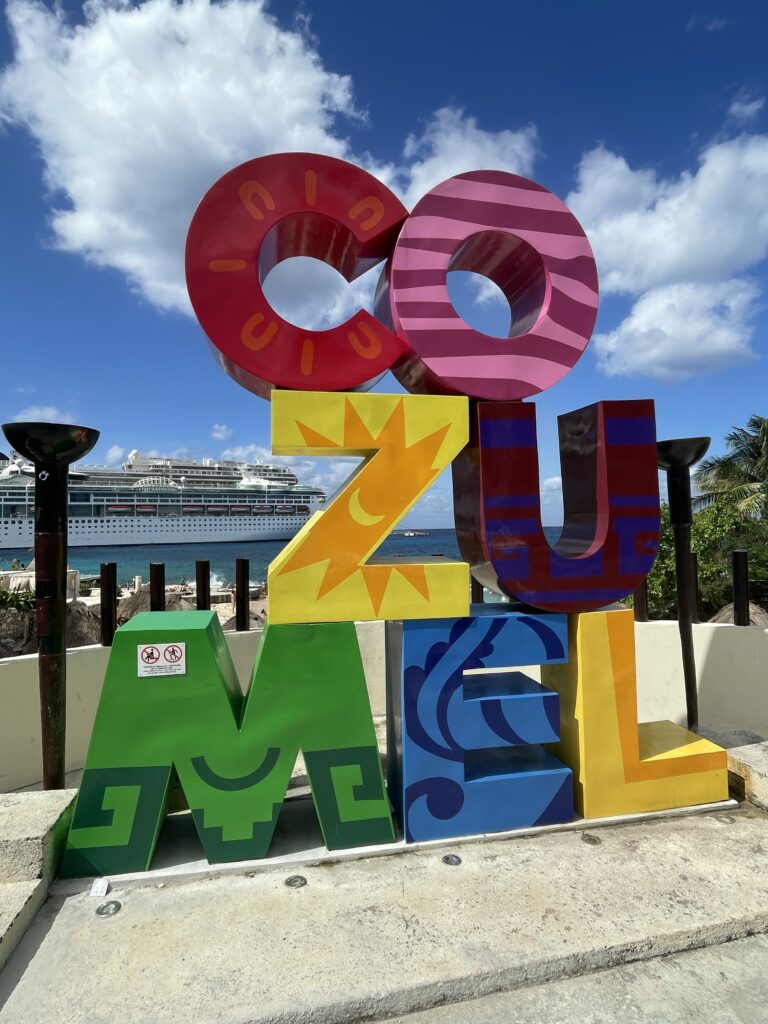
Over this period of intensive cruising, we came to Cozumel no less than a dozen different times. We tried to do different things each time we came but, by the end, were not even bothering to get off the ship, choosing rather to laze by the pool for the day.
Our first thing to do when entering Cozumel was to check how many other ships were there on that particular day. This was important as there could be up to 7 other ships, spewing between 1500-6000 people each. If the numbers were too big, we tended to boycott.
The good thing is that almost half of the island is ringed by a designated Marine Park. This means that there is always somewhere that you can escape to if you need to.
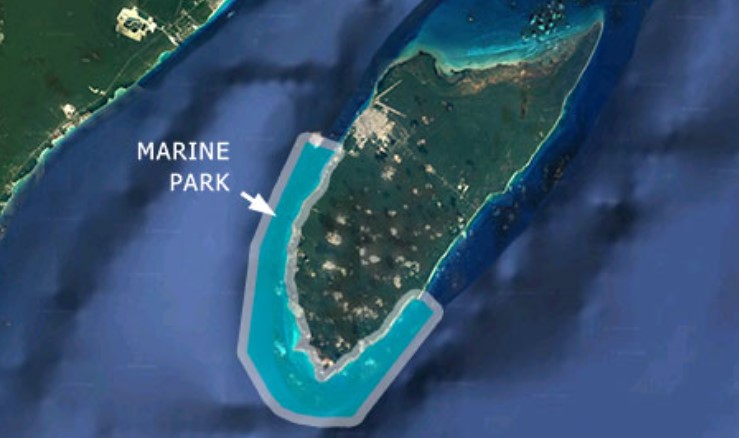
On a calm day, you come into a beautiful island with crystal-clear blue waters dotted with the odd hotel and numerous tourist shops and centres. The colour of the water certainly is inviting and regular daytime temps typically sit in the high 20’s.



The island is one of the top 5 dive destinations in the world thanks to the coral reefs just off the southwestern coast. Add in unusually clear water–with visibility often as great as 200 ft. The diving is fabulous with over 100 dive operators offering far more service than most top dive destinations. The west side of the island (facing the Yucatan Channel and the Mexican mainland) is where everyone lives and stays when they come to visit. This is because the west side is largely sheltered from the strong winds and battering surf and more importantly it has electricity.
If you are not a diver, on the sandy sections they offer the sea trek. This allows you just to walk along the sandy bottom and get close to (but not interact with) the coral reef.
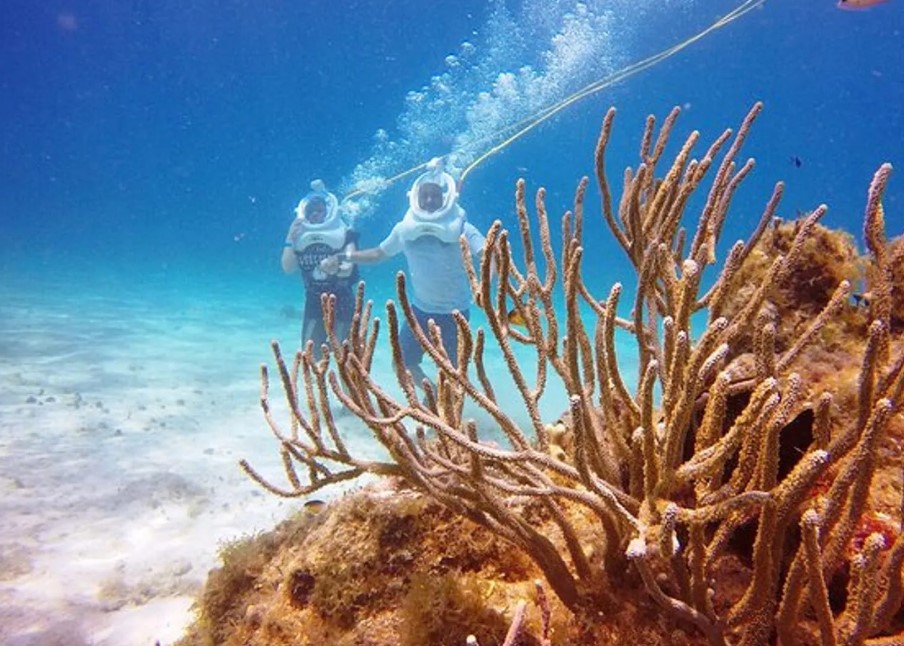
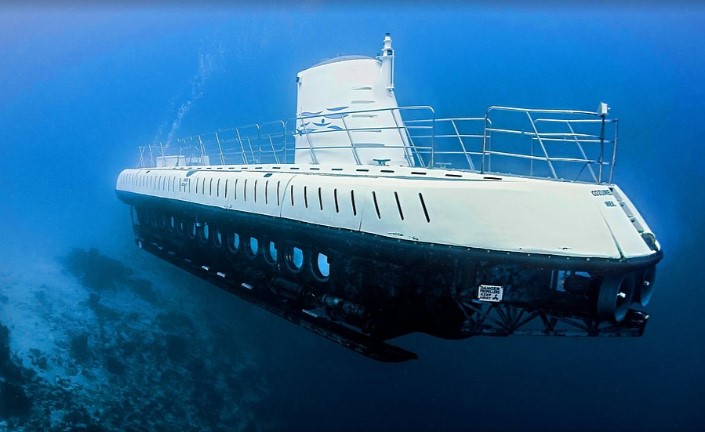
For the non-swimmer (and non-claustrophobic) there is a submarine that will take you about 30m down and along the reefs.
Right in the centre of the developed West coast, you find the city of San Miguel, population 90,000. This relatively safe, extraordinarily friendly Mayan/Mexican community has somehow managed to retain its own customs and cultural identity despite the influx of tourists.
And by influx, I really do mean influx. On a quiet day, we were one of two ships in port; on a busy day, there were up to 7 other ships on the smallish island (these were the days that we hid by the pool).
San Miguel is a nice little town. It has a well-developed, but not too aggressive, tourist esplanade and a few blocks of tourist friendly but not feral attractions, shops and restaurants.
In town you will find the Museo de Cozumel, a combination of natural history and the expected Mayan stuff.
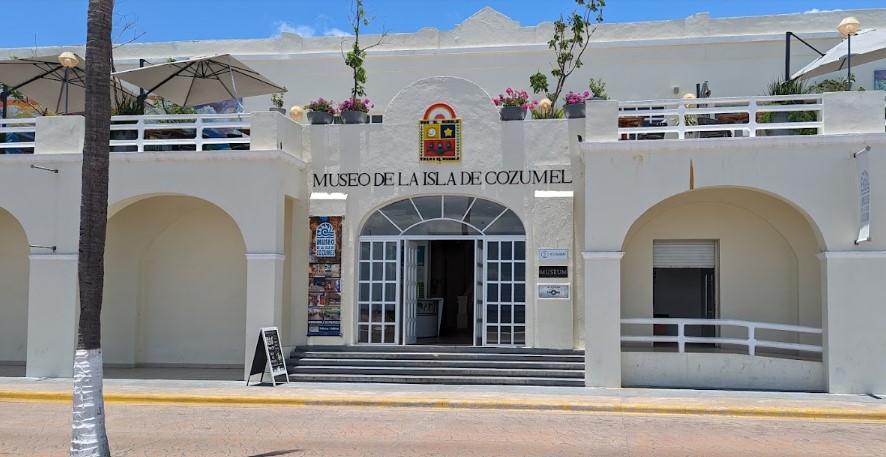
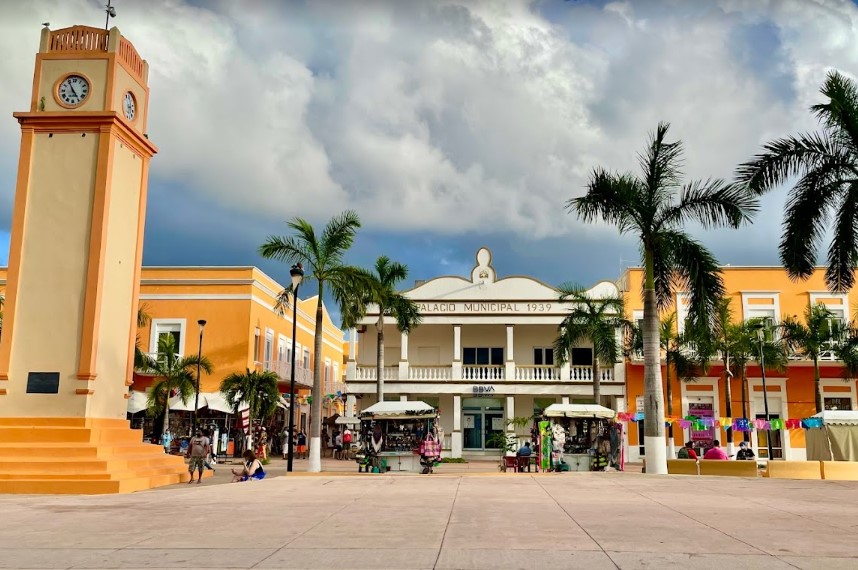
The town square is known as Benito Juarez Park, with the municipal hall and all associated statues etc. And of course the outdoor vendor market.
Iglesia San Miguel Arcangel (St. Michael the Archangel) is the main church in town. It is pretty modest but has some stained glass and the usual church bling.
The other main church is the Cathedral of Corpus Christi.
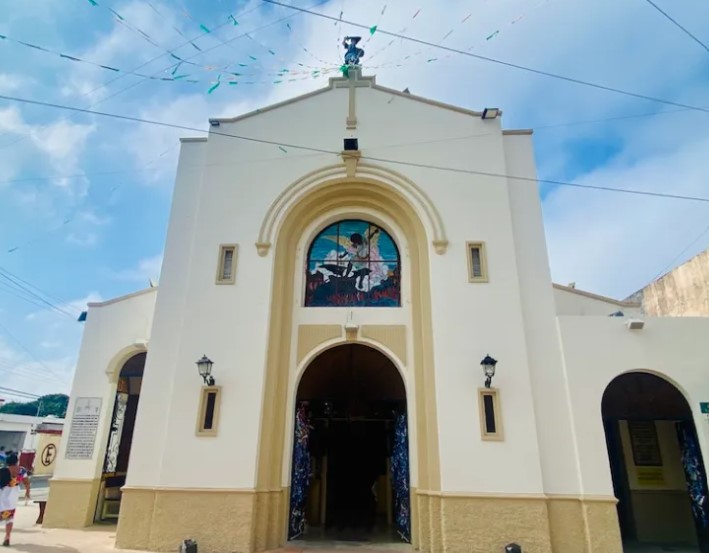
The waterfront (Malecon) near town and almost all along the seaside is packed with statues and monuments. The Monumento Al Mestizaje celebrates Mexico’s mix of Indigenous and Spanish peoples and cultures.









The level of popularity of Cozumel has meant that there are three separate landing points for the huge number of cruise ships that arrive each day. Punta Langosta is the first one and sits in the heart of the tourist strip, just south of downtown and within walking distance of the main square. The International Cruise Terminal (servicing cruise lines like Celebrity Cruises, Disney Cruise Line, MSC Cruises, and Royal Caribbean) is about three miles south of downtown and Puerta Maya is about five miles further south of downtown.
Getting off the ship at either of the two southern ports is obscene. You exit directly into a fully manufactured tourist area (sadly 70% + of people will never see beyond this point) complete with chain stores and bars, over-the-top pricing, duty-free shops, restaurants, and recreational areas for passengers (pools and swim-up bars etc).







But ignoring the entirely plastic version of the place, it is highly efficient (if over priced). You exit the docks into a plethora of tourist shops offering the obligatory tequila, cigars and t-shirts along with some high-end offerings to further fleece the tourists. You pass through the bars and restaurants and come into the day-club (pools and deck chairs etc) and for those still keen (very few make it this far) you pop out at an efficient transportation hub with tours, busses and taxi’s ready to take you where you want.
For the very few that make it out of the greater port area, there are some really lovely beach resorts (paid) available where (for not too crazy a price) you can kick back by some pretty spectacular beaches and get fed some really tasty local delicacies.
In addition to the beach resorts there are the usual things on offer for those that do make it out of the ports. There are more tourist shops, bars and restaurants (all considerably cheaper when you get out). The restaurants are fun and they really know and cater to their market. Many of the ship’s crew come from Asian countries, so it is common (but still odd to see) Filipino or Indonesian restaurants within a very short walk of the port.
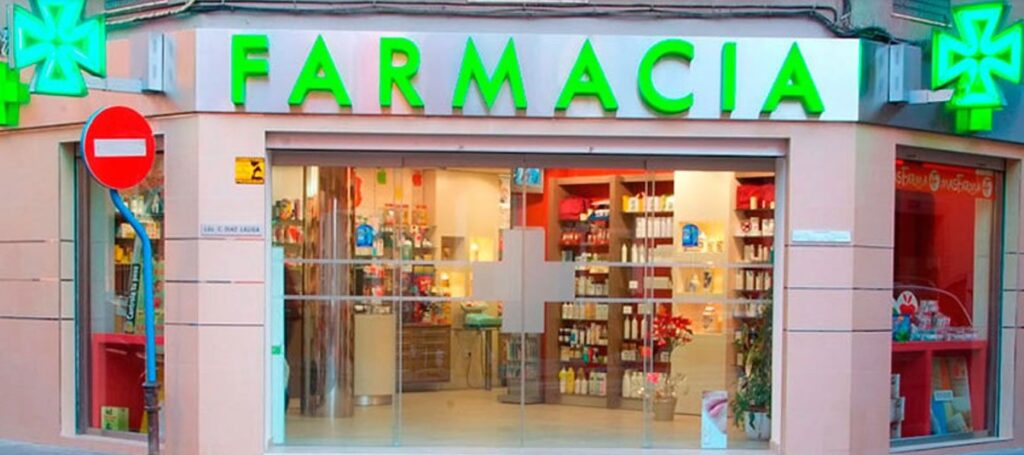
Almost without exception, in Mexico, one of the first signs that you will see is the one saying Farmacia.
Thousands of Americans and Canadians cross the US-Mexico border for cheap prescription meds. For the most part, you can purchase prescription medications in Mexico without a prescription. You can also bring those meds back to the US. Sometimes, the savings are up to 80% on certain meds from Mexico.
Despite the boom in tourist and residential development over the last several years, Cozumel continues to have vast expanses of untouched jungle and shoreline. The large central portion of the island is mostly undeveloped jungle, brimming with wildlife.
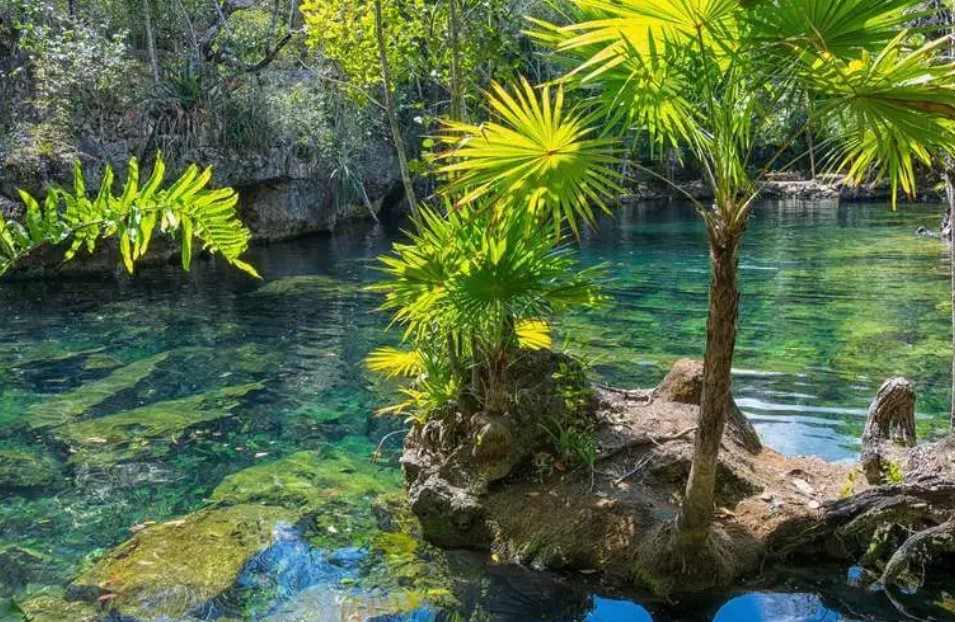
Even near the two southern port stops, the tourist infrastructure only goes back a block or two, behind that are heavily wooded jungles and minimal other development.
On one of our trips to Cozumel we were gearing up for a quiet time when the concierge (cos we are important), who was Mexican, was telling us about the extra bits that the tourists don’t get near. His suggestions were a bit more off the (tourist) beaten path but were true local hangouts. Not being afraid of some colour in our days, we got some details and on our next 3 (not 7) ship days we followed his advice and were glad that we did.
So it was off the ship and a $10USD cab ride to town, the obligatory photos of the downtown area, statues and artworks and then off on the real adventure. The goal was the Mercado Municipal. The authentic wet markets are specific to the locals. There was the odd tourist there, and you could get some low-level trinkets, but for the most part, it was not aimed at us.






The reason for the trip was food. After glowing reviews of the price, taste and authenticity of the food here, how could we not make the effort.



And the main game was some soft pork tacos (fat and skin on) with some onion and lime juice served with some habanero chili sauce (green or red) that were truly spicy. Two tacos each and a drink each set us back about $10USD for both of us.



They were magnificent (but possibly heart attack inducing if you had them too often).
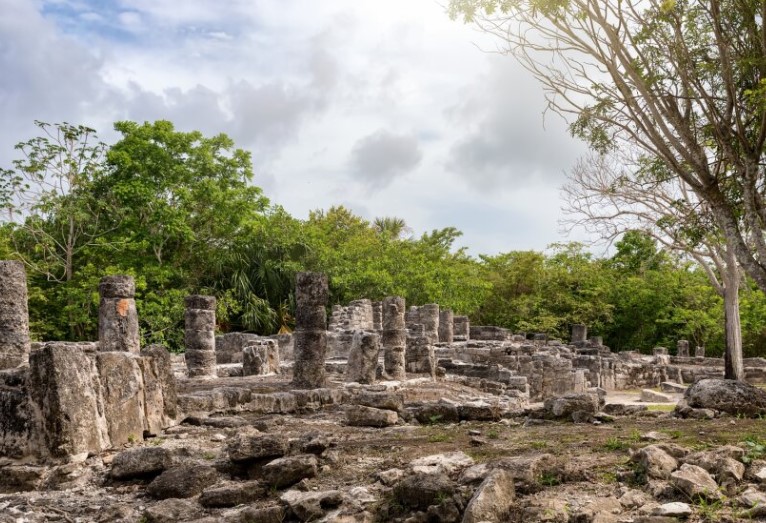
A few more blocks on from the central markets and you find yourself at San Gervasio an area that holds the ruins of the goddess Ix Chel, a deity of childbirth, fertility, medicine, and weaving.
El Cedral is a small town (not too far away) that is one of the oldest on the island with its architecture and traces of paintings on walls dating from 800 BC.
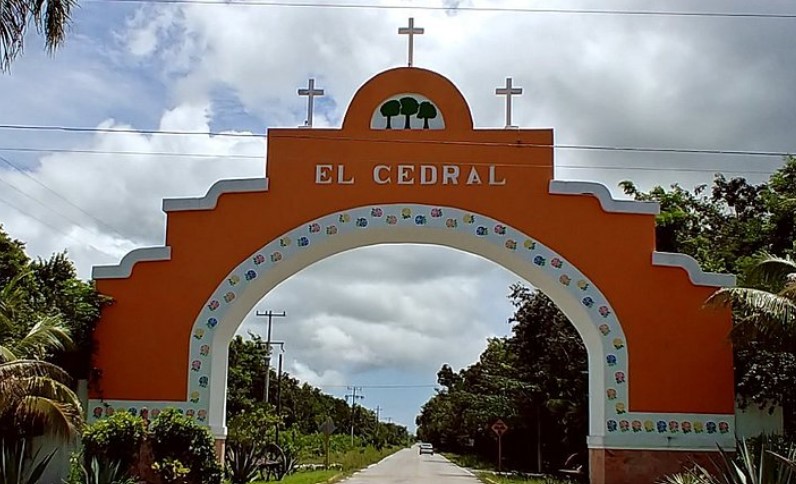
On one of our forays to Cozumel, Jill booked us into a snorkelling adventure which was quite nice but hugely overpriced, given that we never left sight of the ship. We quite literally hopped on a boat, circled our ship, went down the beach a couple of hundred meters and jumped in the crystal clear waters. On the upside, we snorkelled in a water depth that (largely) protected the coral from the clumsy tourists.
The Mexican government announced an increase in the tourist tax from $11USD per person up to $42USD regardless of whether the passenger gets off the ship. This has caused a major rethink in how cruise ships will operate in the region in future.
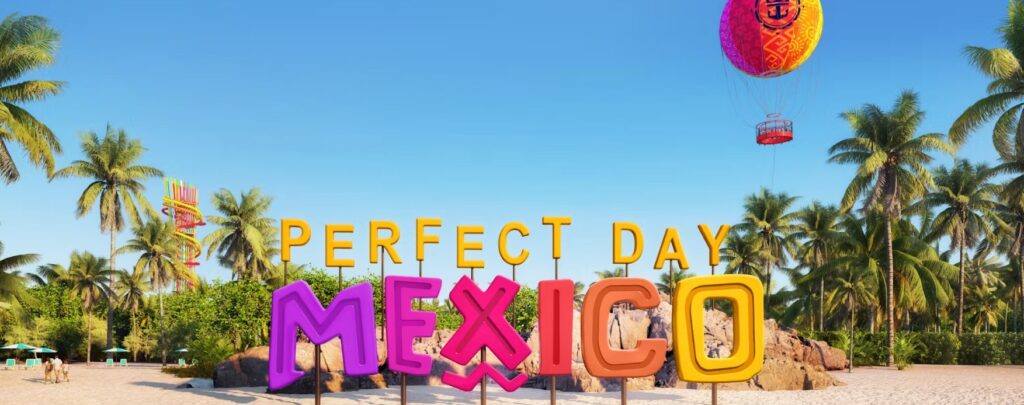
Royal Caribbean was the first to counter this by buying the rights to the Puerta Maya port and the surrounding area with the intent of developing perfect Day Mexico (expected by 2027).
This has already been done in the Bahamas with the company buying one of the Berry Islands and developing Perfect Day at Coco Cay and also buying the stretch of land opposite Nassau with the intent of developing a private beach club (expected December 2025).

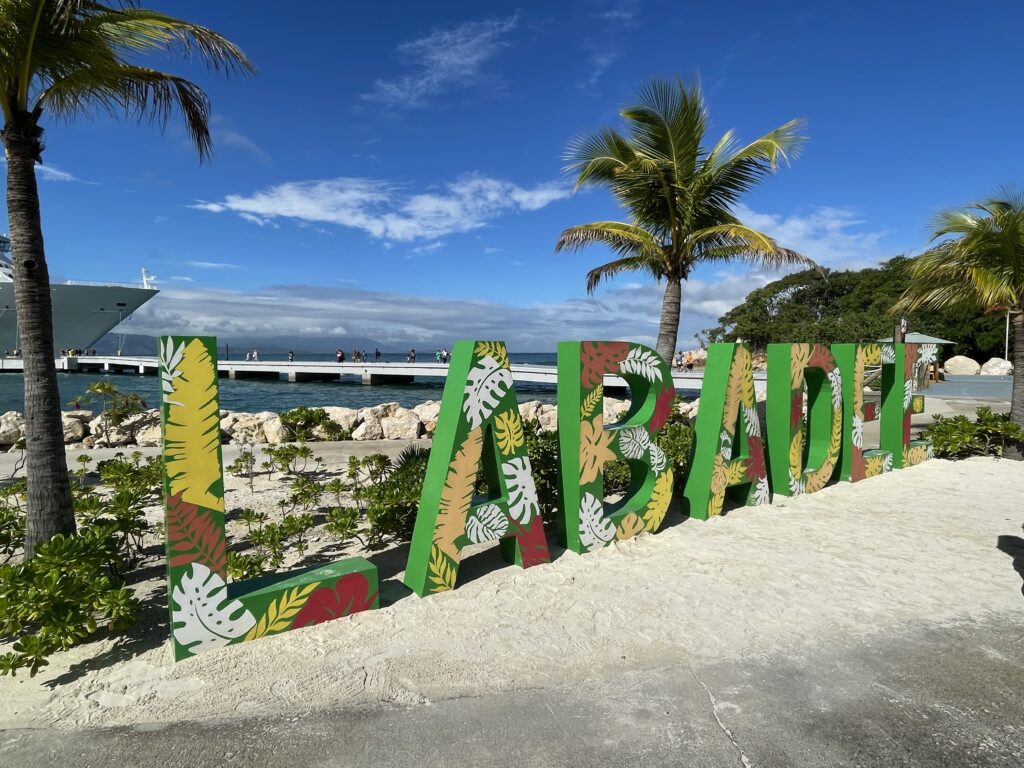
They also purchased a private island off Haiti and developed Labadee. This move bypasses corrupt or greedy governments and ensures that all profits go into the corporate pocket. Sadly this means that there is less going to the communities that need the funds.
This seems to be a common theme among cruise ports globally (recently the port of Venice introduced a 10 euro ‘day trip fee’ for cruise ship passengers). Governments see a ready income source and keep upping prices and taxes until the cruise companies have enough and find alternatives. This is OK if the money is redirected into the tourism industry, protecting the area or supporting the attractions but Mexico’s decision was to fund the military.
Costa Maya
This was our second most visited port in Mexico, having been 6-8 times. Our first impression was not a good one. It was identical to the (southern) port area of Cozumel , in that it was a wholly manufactured area with the sole intent of milking money from the tourists. Shops, restaurants, bars, beach clubs and nothing much else.






Much like Cozumel, most people never get beyond the confines of the port area. But in reality it has been specifically designed to handle 3 big cruise ships at the same time. There is a large shopping mall, 3 salt-water swimming pools, multiple restaurants and bars and more trinket shops than you could need. If you just want to kick back, then it is fine.
Our first trip was to a private tour to a paid beach break. It was a pick-up transit and kick back at a private resort (after having fought through the mess of the port). It was perfectly reasonable (if a little expensive) but the weather made the seas a bit rough so it was too rough to swim or snorkel.







After our first visit we were about to fall into the boycott zone where we just stay on the ship to avoid the mess of touts. But in a chat we learnt of the main town of Mahahual beach. The town itself is only two streets that go parallel to the beach and can be reached by a $4 pp cab ride each way. One street is full of local souvenir shops, restaurants, hotels and guesthouses. The beach is just a few meters away. While there is not a lot to do, with such crystal clear waters…who cares.



We quickly found our preferred place (The Crazy Lobster), a restaurant and beach club that does not charge for the facilities, just what you consume. And it is very reasonably priced. The first foray saw us getting the $10 buckets of beer (for 5 bottles) and offsetting the booze with some fresh chips, salsa and guacamole.






The beer stayed standard throughout our many visits, but the food options zipped in and out across the varying options until Jill finally bit the bullet and had the mixed ceviche. It always looked good, but the portion size was just too challenging.







By the third trip we were locked into Mahahual beach and the Crazy Lobster. The more we learned, the more (or less) we did. Massages on the sand were $20 for an hour, and the touts were not pushy.
The longer my hair got, the more unmanageable it became. So one day we decided that plaiting it was the obvious answer. So for $5 a plait I had 3 plaits and shaved sides.
This lasted a while until I got Jill to pull it out. It may emerge again yet.
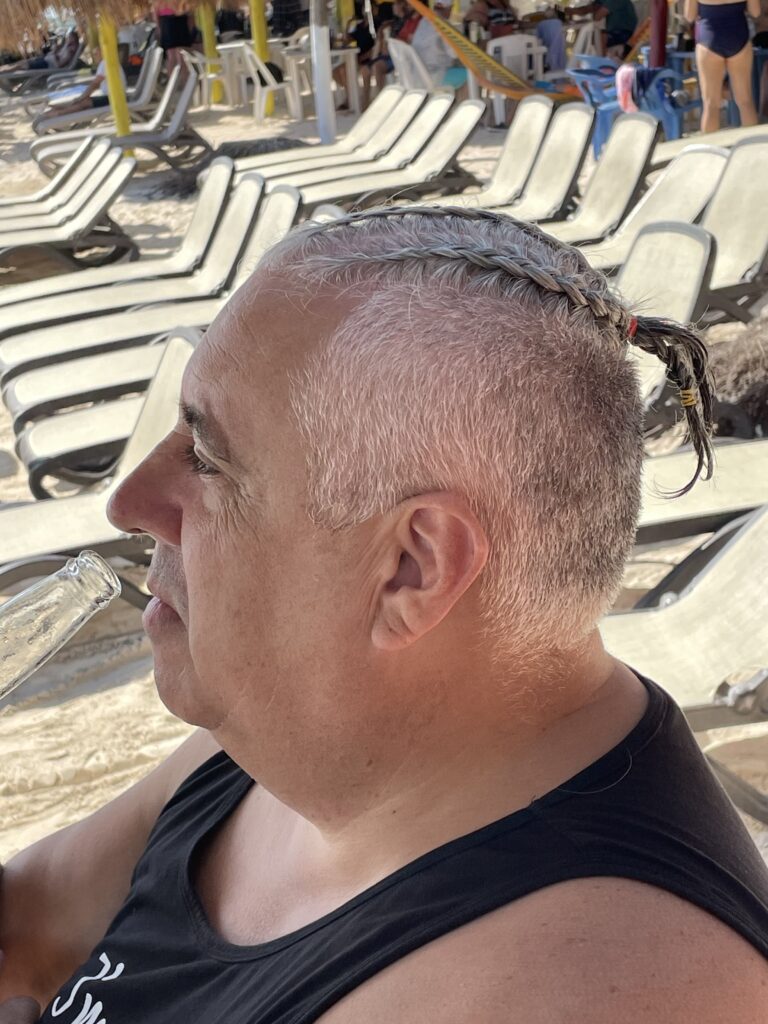
As plastic and fake as Costa Maya is, we found a way to amuse ourselves and it is now one of our more favoured ports.
Playa del Carmen is the closest mainland town to Cozumel and is the launching point for those seeking to head inland to visit the Mayan ruins of Chichen Itza (a 2 hr bus ride away).
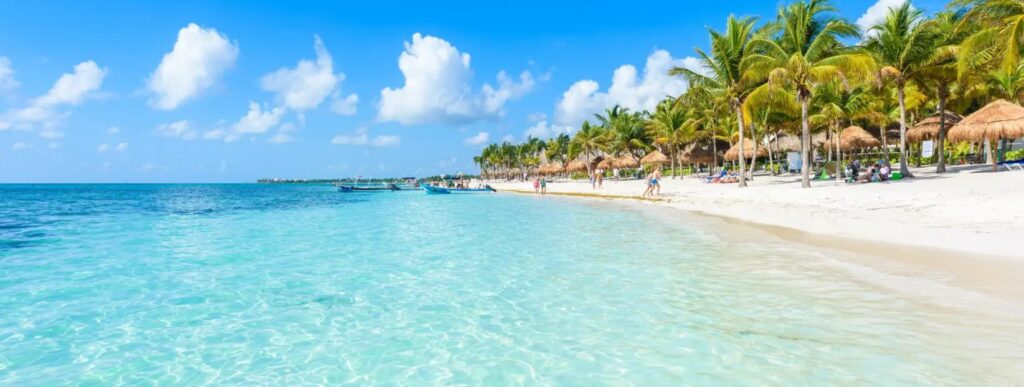
The town itself is primarily a coastal resort town, along the Yucatán Peninsula known for its palm-lined beaches and coral reefs. The Quinta Avenida (pedestrian thoroughfare) runs parallel to the beach, with shops, restaurants and nightspots ranging from bars to dance clubs.




The beaches are nice and white, sandy and well-developed (without being stupid). The place is safer than most ports and would be a great place to come and stay for a while, rather than the usual fly through.
Yucatan – Progreso
Yucatan has a rich Mayan heritage and the main landing point is a coastal town by the name of Progreso. The city is a gateway to the inland Mayan archaeological sites of Chichén Itzá, Uxmal and Dzibilchaltún.
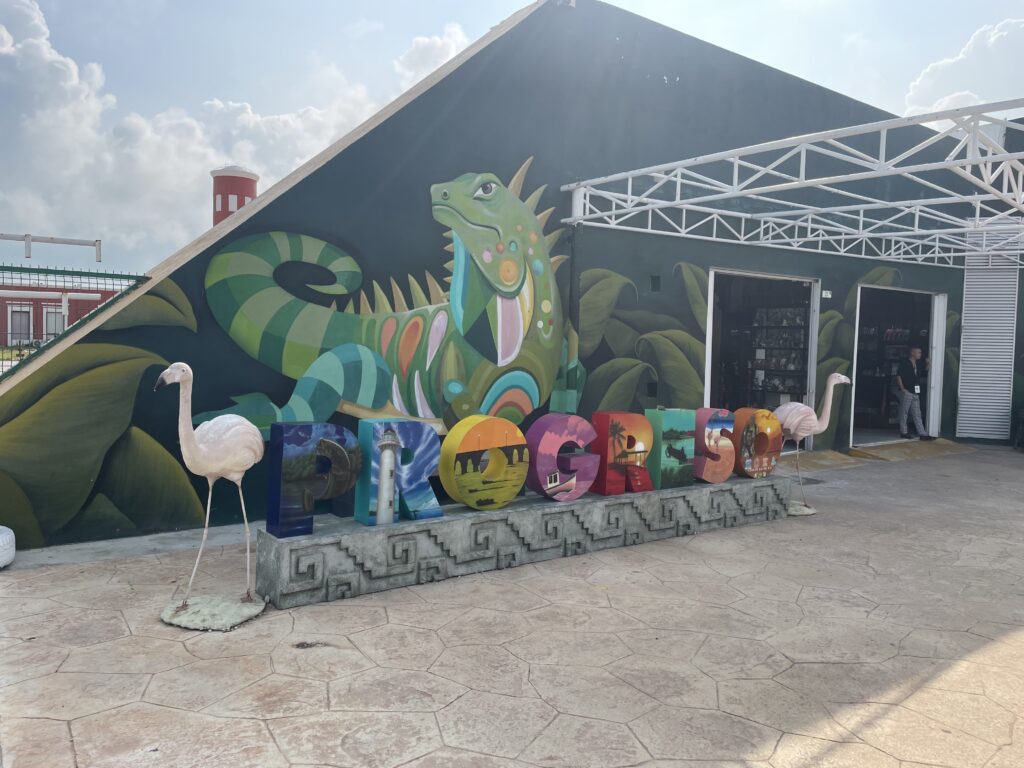
The first thing that strikes you about the place is just how far out you are. The pier in Progreso was 6.5 kilometres (4 miles) long (one of the longest in the world) but was extended a further 1.5 kilometres to take the Guinness World Record and was presented with its certificate in July 2024.
What this means is that a lengthy bus ride to the centre of town awaits you. This also means that there is no escaping the tourist traps as you are quite literally dropped off into the heart of the CBD and are surrounded by tours and trinkets.





As crazy as it is, it is not that bad. It is certainly an assault on your senses but (for the most part) things are reasonably priced and the touts are calm and respectful.
A city tour bus is on offer for $10USD a head. On one of our forays to Progresso, we hopped the bus and did the 45-minute tour around the broader town. This took you a little further than you would have ever walked to (especially in the heat) and gave you a nice overview of the place, without raping and pillaging on the prices.




An oceanfront promenade, the Malecón, is lined with beaches and thatch-roofed bars and restaurants. And they are reasonably priced. Unlike many of the Mexican ports, Progresso is one of the more reasonably priced ones. Don’t get me wrong, they get their fair profit from the tourists, but it doesn’t feel extortionate or unreasonable like some of the other ports.








On our very first entry we caught the bus to town and just wandered the town centre, finding our way down to the Malecón. Now even in mid-winter Progresso will be 28 degrees and will go to the high 30’s and maybe even hit 40 in summer. Having walked a bit in the winter sun, we found ourselves looking for some respite and maybe even some refreshments.




Our meal and drinks were cheap, the guy at the shop next door saw a potential target and introduced himself to us and asked us to come and look at his shop. So after a couple, I obliged looking to help the local community. I found some traditional Mexican cotton shirts for sale and was willing to part with some cash to make everyone feel good about their day. When I asked the price he responded with $160USD, for a shitty cotton shirt.
I laughed, he looked offended, he espoused the virtues of his shirt, I highlighted that I would never pay that amount ($250+ Aussie) for a shirt, let alone a cheesecloth-looking thing. He wanted to start a negotiation coming down to $150USD. I again laughed and suggested that maybe we were wasting each other’s time.
He asked me what I thought was reasonable and my answer was that I would never pay more than $20USD for a cotton shirt, quickly ending our interaction. I went back to the cantina out front figuring that if he really wanted the sale he would come and grab me before we left. But he was never to be seen again.
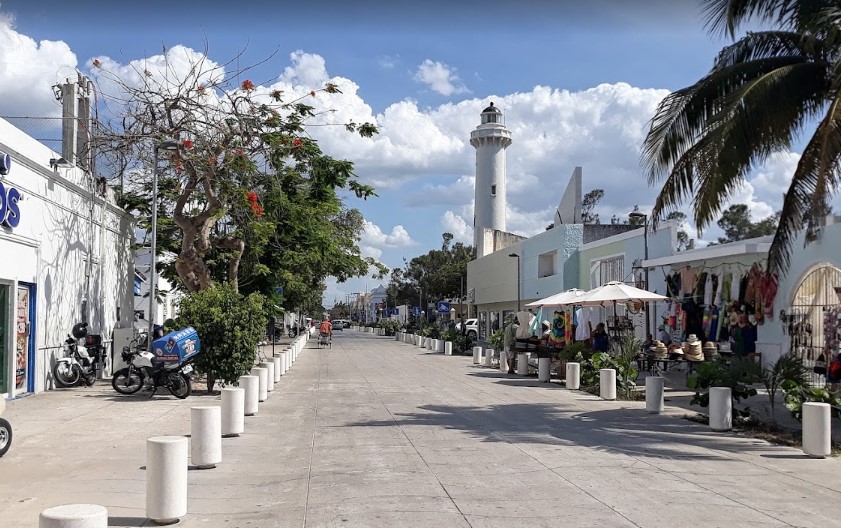
The Faro de Puerto Progreso, built in 1893, is an active lighthouse with a range of 33 nautical miles, which equates to 62 kilometres on land.
Sendero Jurásico is the local version of piss weak world. It is a bunch of dinosaur statues (some animatronic) a bit out of town (10 mins). The tourist accounts suggest it is overpriced for what it is and that you are best to go in the evening to avoid the heat and get the lit-up night time view. We went past in (but not in) on our ($10) bus trip.




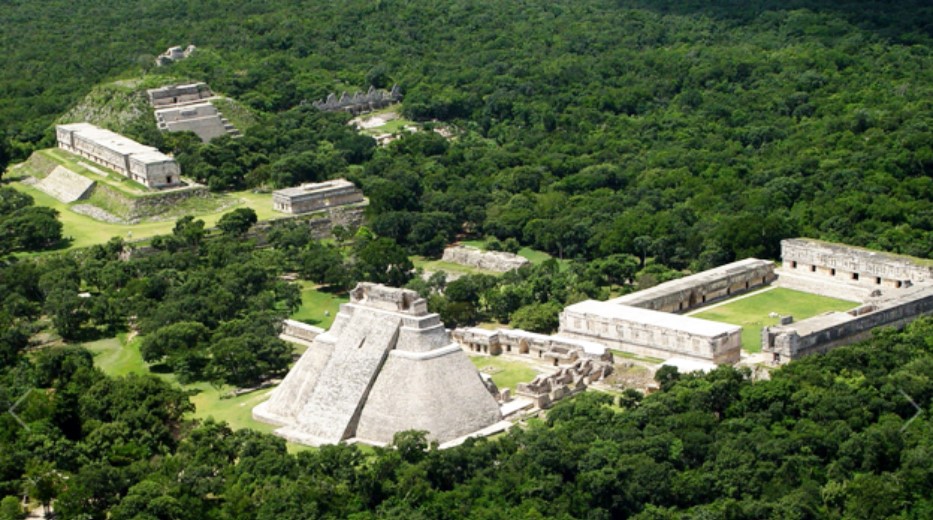
Uxmal is an ancient Mayan city (about 120 km away) that is believed to have had 25,000 people in the city (between 300 and 1200 CE).
Dzibilchaltún is a small site (about 40 km) south of the town. If you visit during the equinox you can see the sun rise right through the doorway to the temple. A testament to the astrological prowess of the Maya.
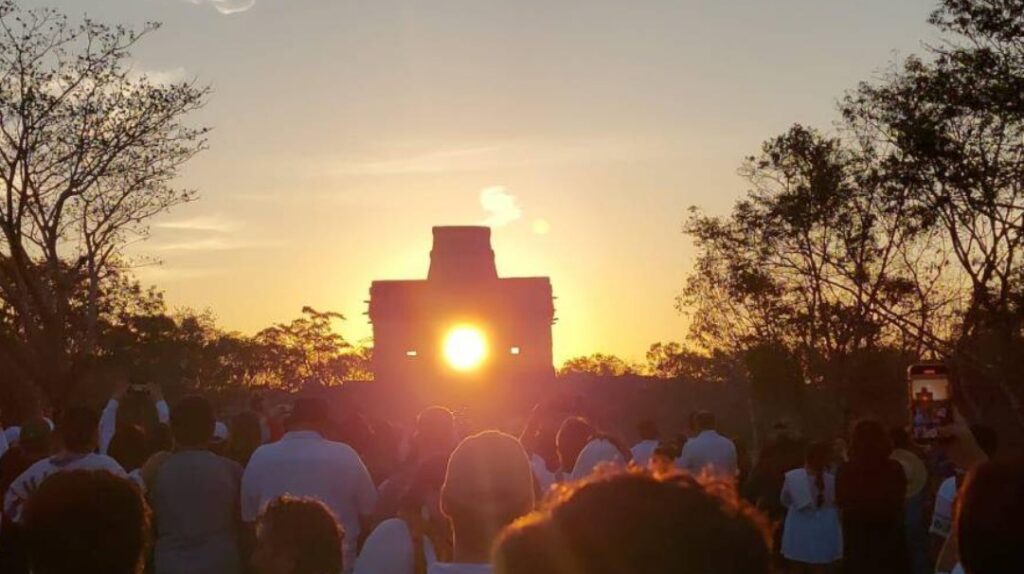
The most well-known structure at Dzibilchaltún is the Temple of the Seven Dolls, so named due to the number of small figurines discovered there. The dolls, which represent different physical deformities, are housed in the onsite museum.
Cancun

Well I nearly didn’t do this post because I couldn’t work out what to say about Cancun. Almost everything I say will be wrong…but at the same time be 100% accurate.
It is safe to say that Cancun has absolutely everything and that it offers nothing. It is Las Vegas by the ocean. Everything is overpriced. There is nothing here that is authentic but there are some very real experiences to be had here. Our exposure to Cancun is by no means representative but in hindsight I am not sure if anybody’s experience would be… it is ultimately whatever you want it to be.
It starts at the airport…from the Margarita Bar as you walk out to the $70US cab fare into town…you will be stung.
I think that it is fairly safe to say that every single 5 star resort conglomerate on the planet is represented here in Cancun at least once, with many having multiple offerings. For the most part they are incredibly flash, opulent and lavish…and the sit side by side in a 17 mile stretch of beach between the Nichupte Lagoon and the Caribbean Sea. They offer all inclusive resort deals at a premium price. A haven where your every need is catered to and there is no need to ever leave your private enclave.
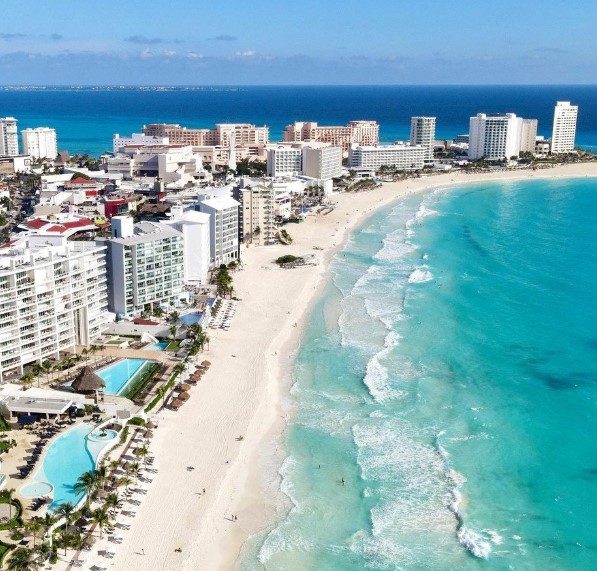
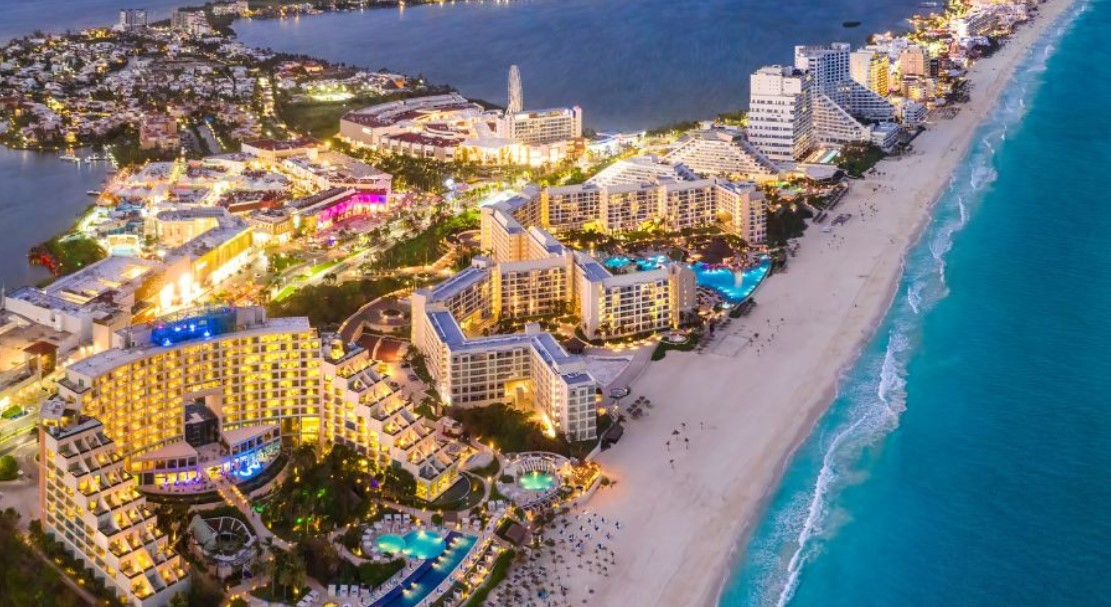
Across the road from the hotels is the shops…of course…and every brand name is represented. If you can afford it, it will be available for purchase. Interspersed with the usual suspects of elite fashion and consumerism are local artisanal offerings at hugely inflated prices. These are held within large market type areas where the tourists can haggle to get their local souvenirs.
The most persistent and shrewd of hagglers may be able to get away with paying 250% over what the item is actually worth. These guys are professional sellers…and they are good at it. Enter the oblivious tourist with a wallet full of cash and an “I’m on holiday” mindset and the prices skyrocket.
The drinks are overpriced and often watered down and the food is typically exorbitantly priced. But the beaches are stunning, the service is first rate and the water is crystal blue, warm and inviting. And attached to overpriced tours are some incredibly good options of things to do in the nearby vicinity.
Of particular note are the ancient Mayan ruins (including Chichen Itsa), numerous sinkholes or nearby islands. But we were only here for around 24 hours and none of this was done by us, and certainly the 5 star world was avoided.
Instead we stayed true to form and crashed at the local backpackers in search of something that resembled the real Cancun. In this we were wrong, and we (for the most part) failed. But this more reflected our ignorance of the many versions of Cancun operating simultaneously, in parallel, and almost entirely mutually exclusively.
So what did we do…not very much. We wandered the backstreets, shopped in dodgy markets for overpriced trinkets and tried to find traditional, local places to eat. What we ended up with was a fantastic, authentic Mexican meal, from a dodgy restaurant that aimed to attract the tourists. It was cheap, tacky and brilliant.
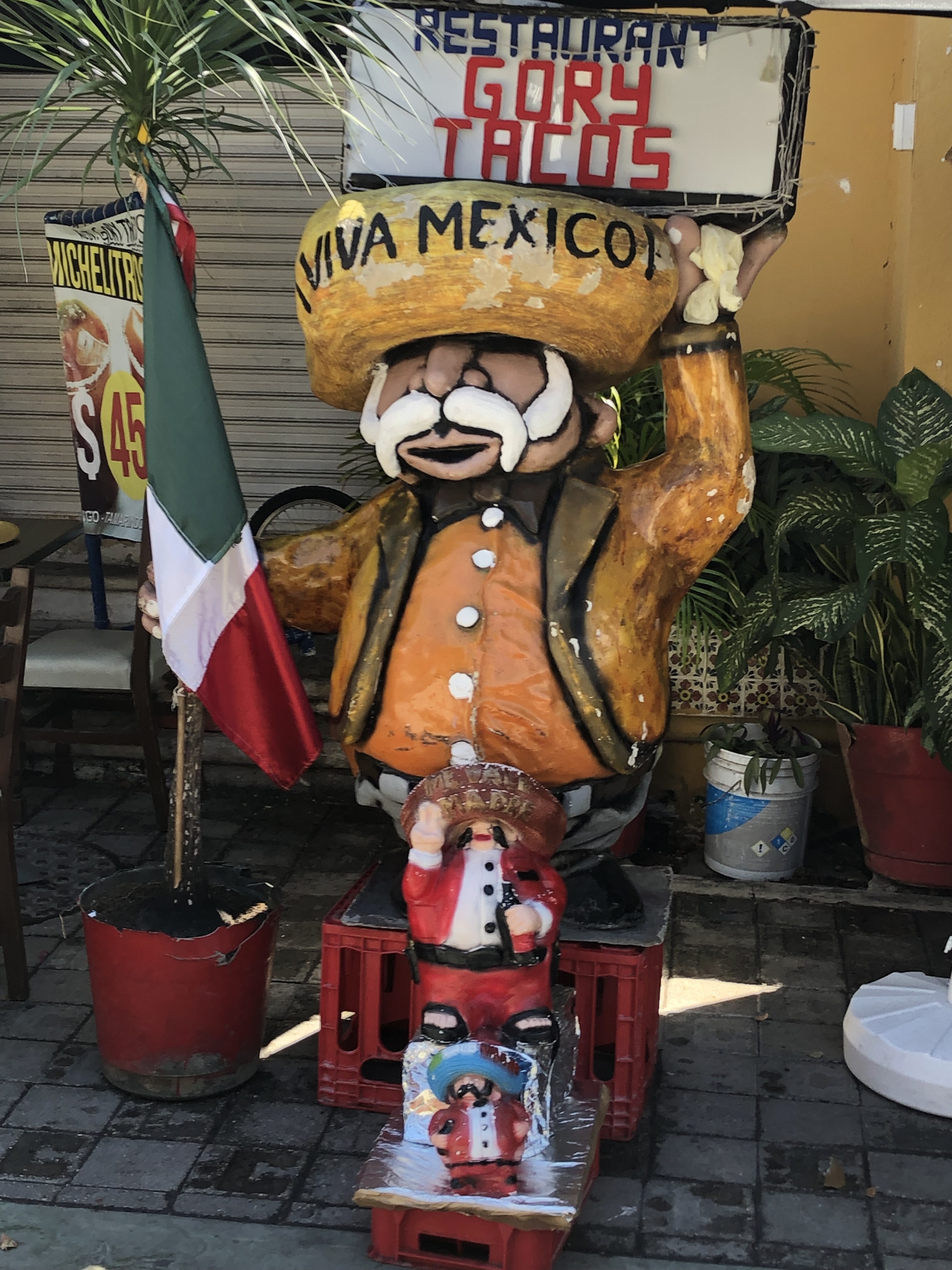
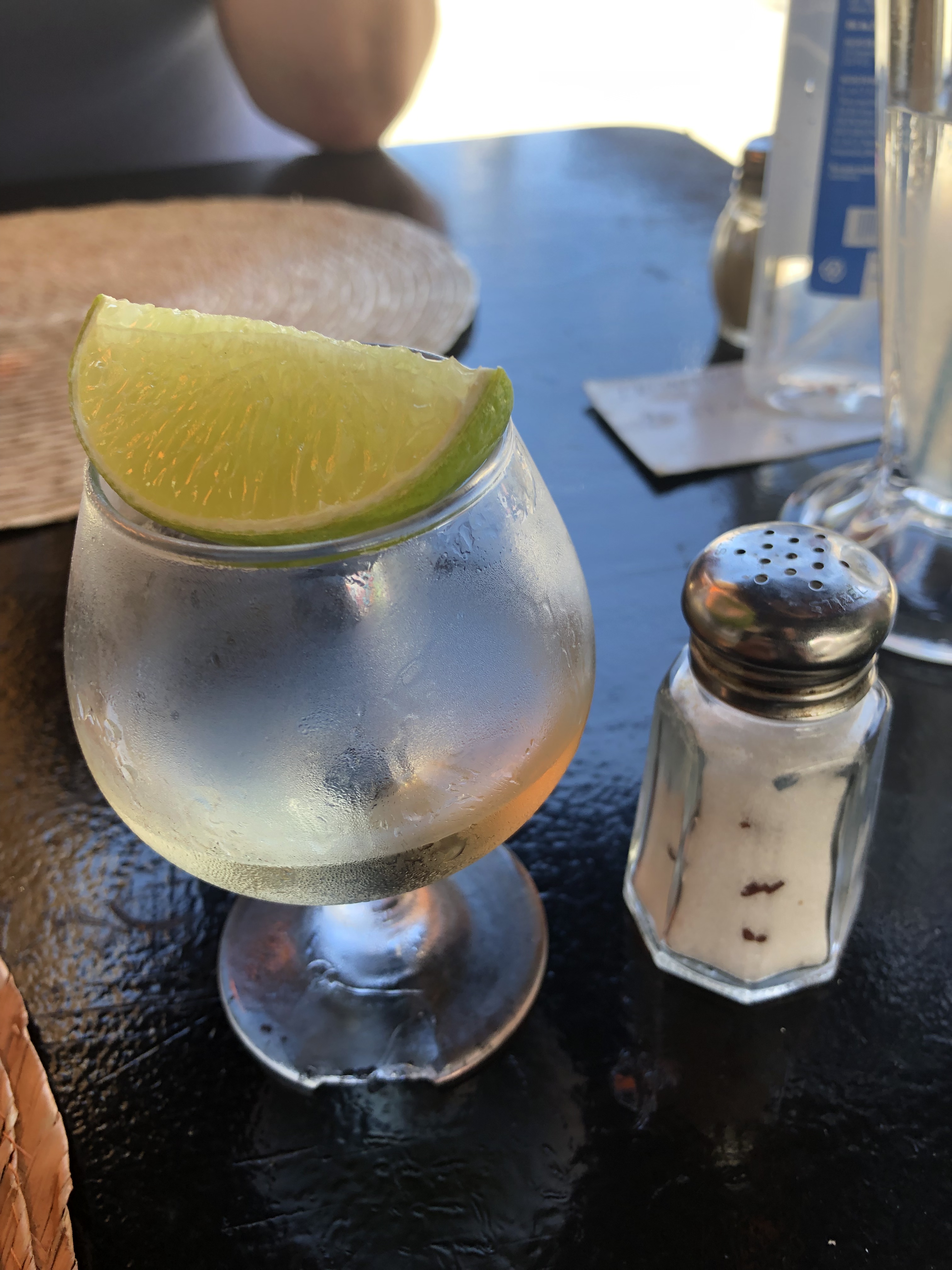
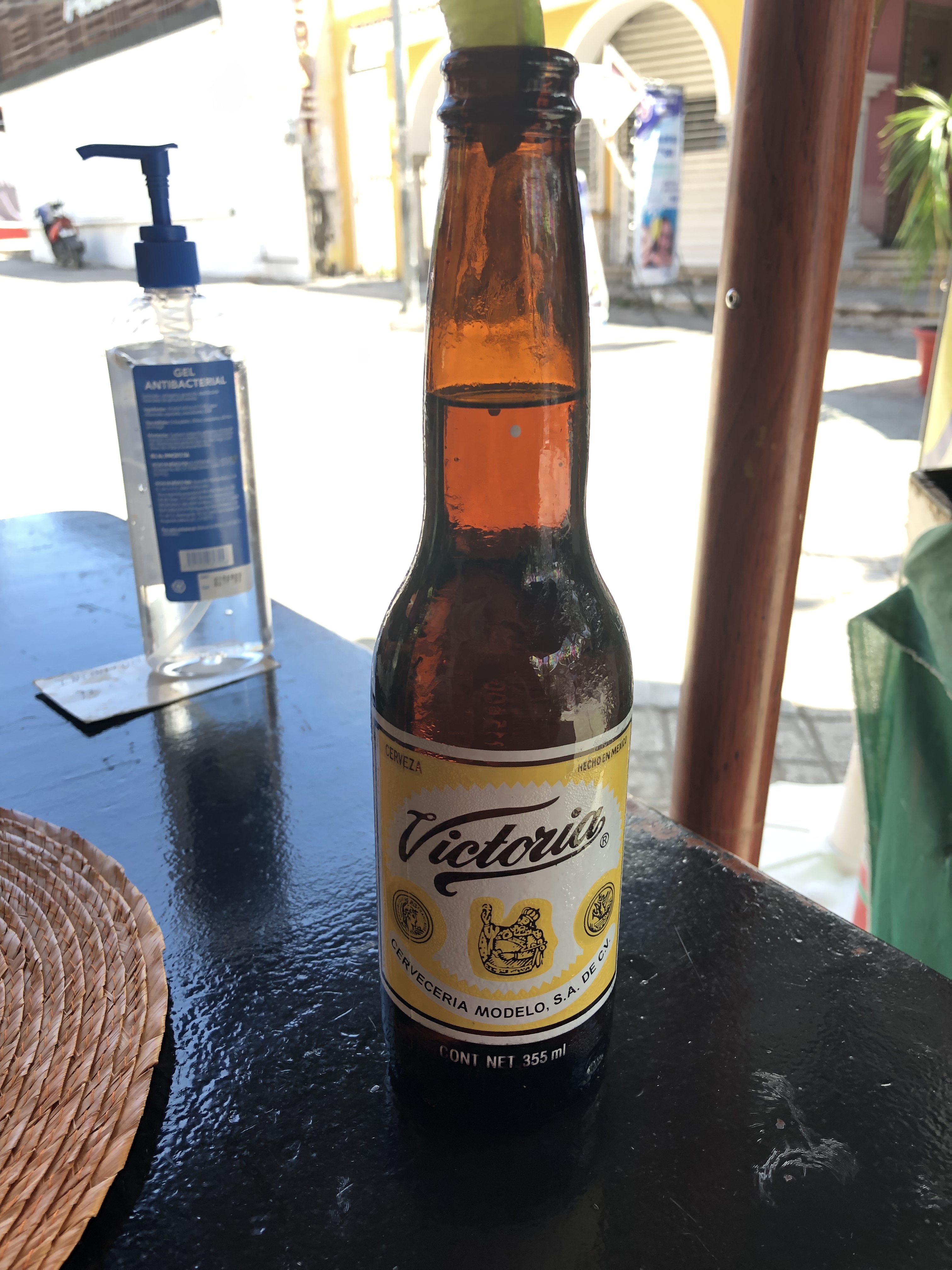
We got incredible food, the best service we have ever received, 2 for 1 drinks, huge grins, lots of banter and a thoroughly enjoyable afternoon…and all for an reasonable price tag. And of course the meal was washed down by some of the finest Mexican coffee (tequila). And if this is the real Cancun then we dipped our toes into the water, if it isn’t then we were miles away.
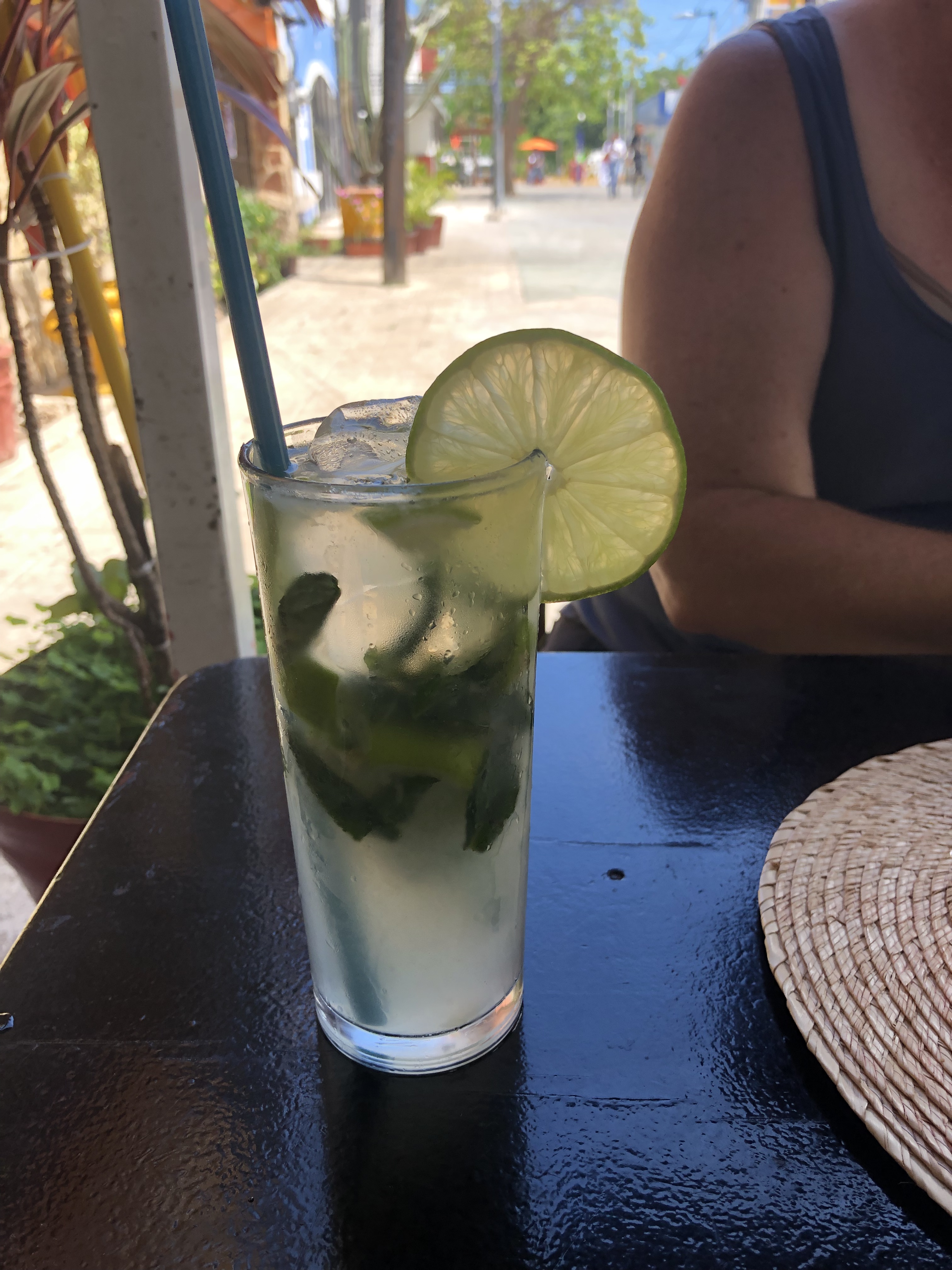
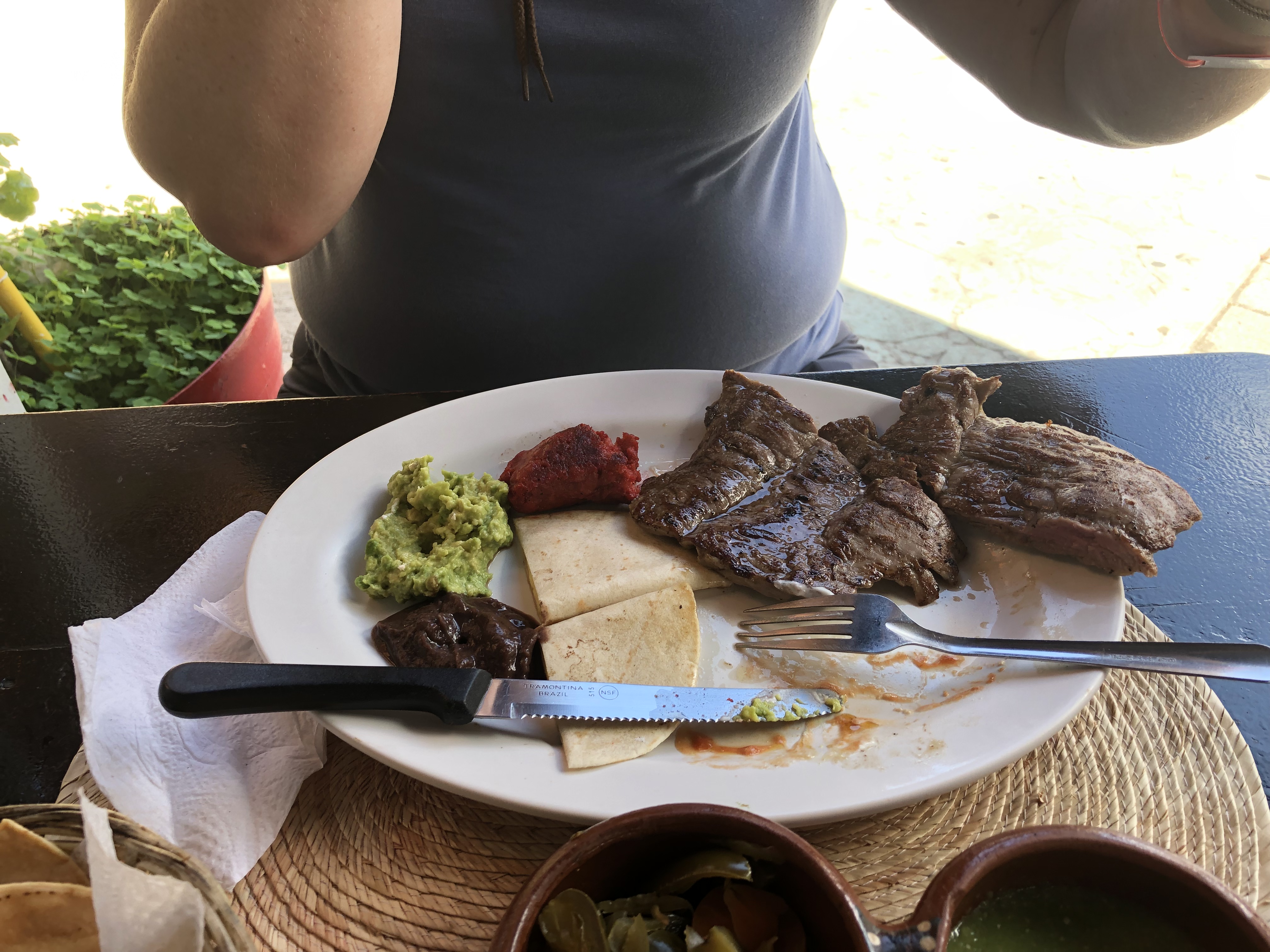
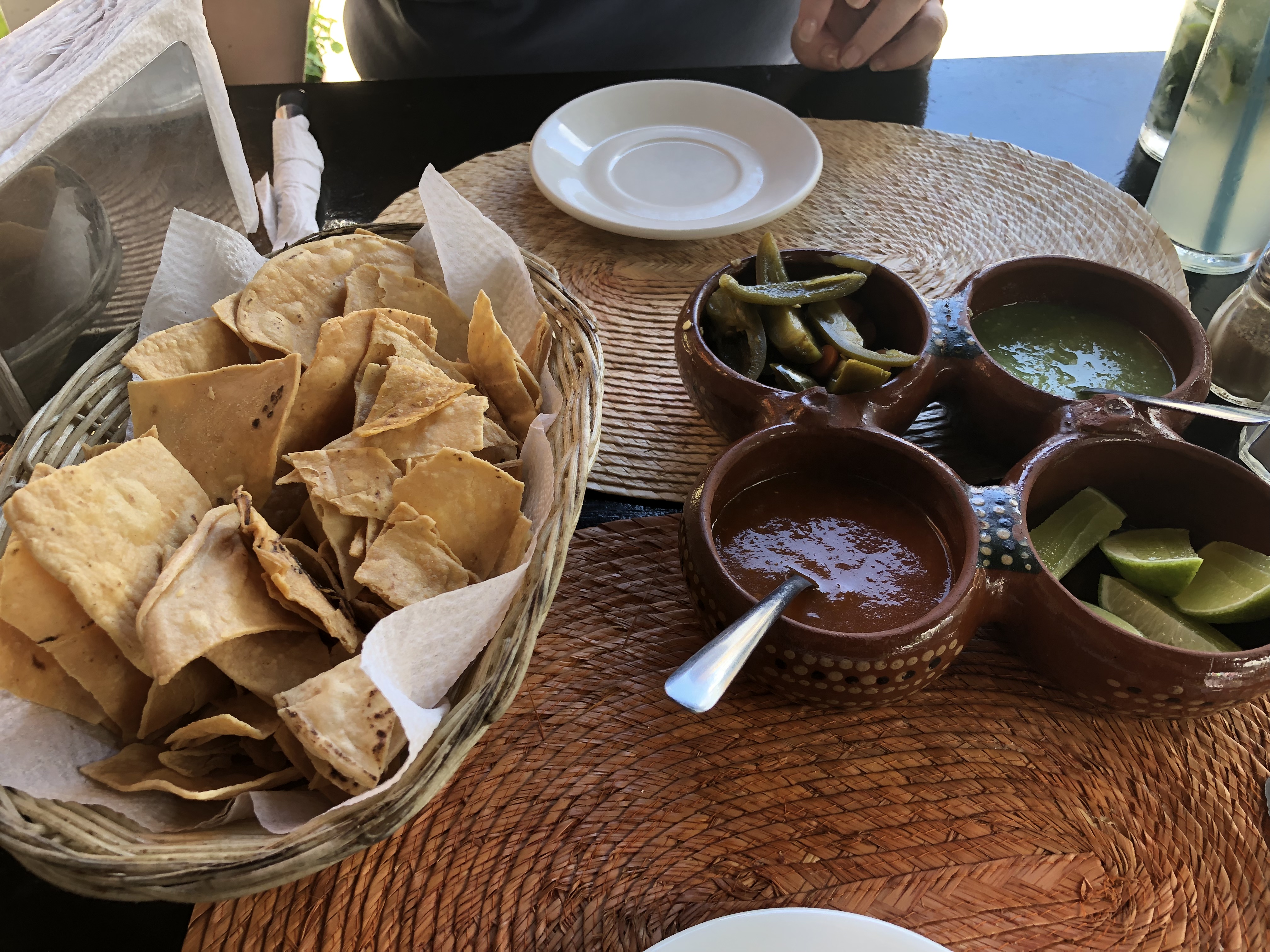
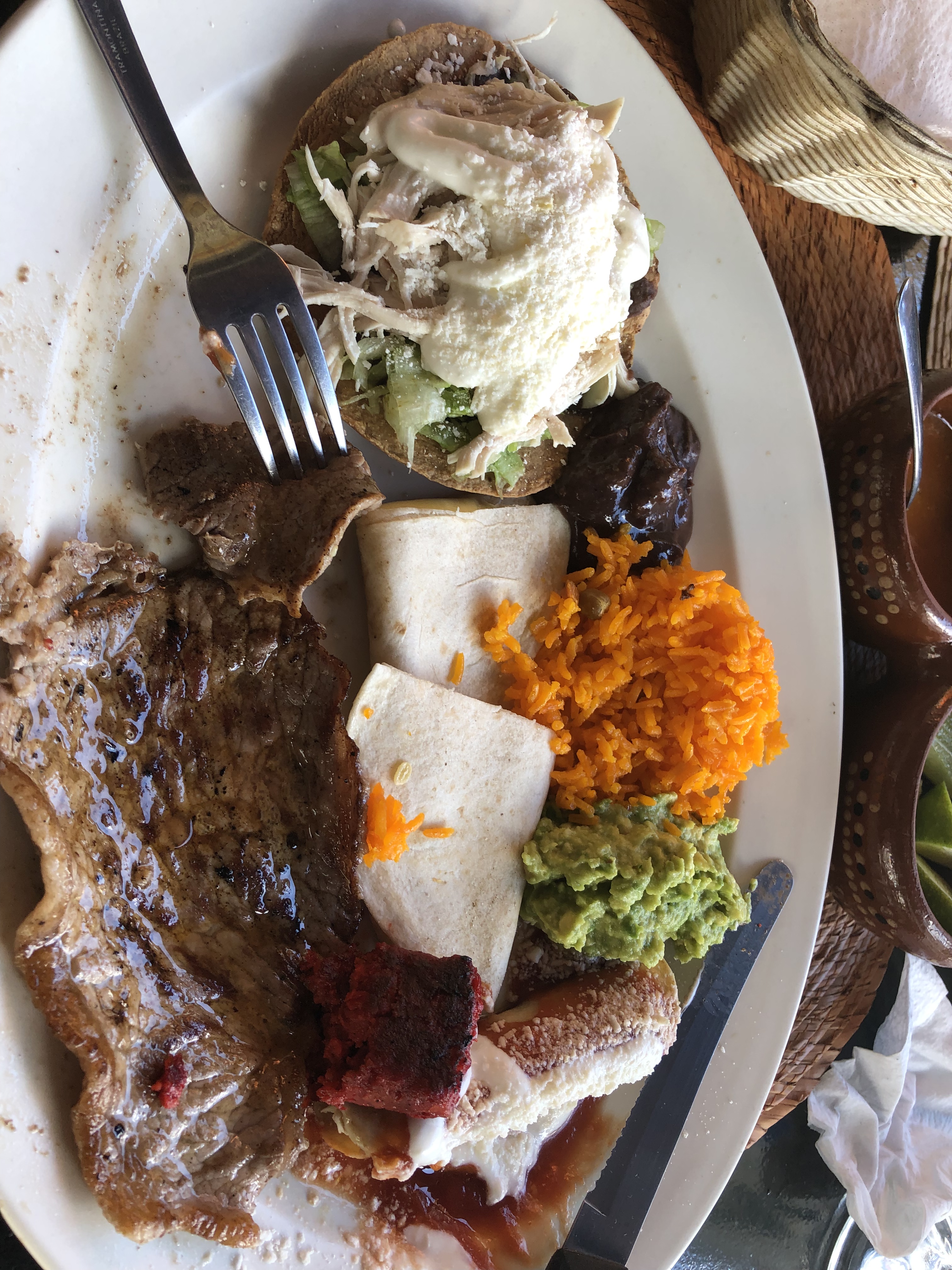
Our philosophy of travel has been to get as close to what is authentic as is possible. This mostly means living meagerly and eating from street food stores or dodgy street-side restaurants. And this is what we sought and found here in Cancun, but I am not entirely sure that this was what passes as an authentic experience. Some places (like the Gold Coast in Australia) have evolved to be true tourist towns and that the tourism in its various forms is what is actually authentic. Perhaps this is the case in Cancun.
Long story short, we had a nice time and I would happily return.